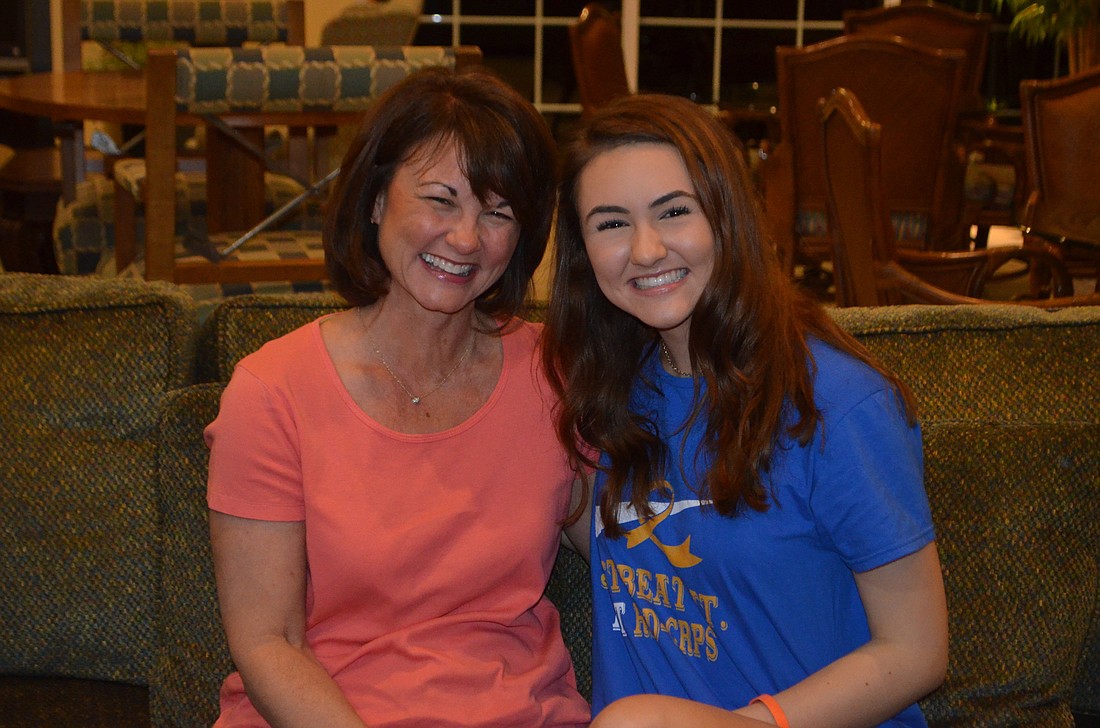- November 16, 2024
-
-
Loading

Loading

Morgan Trevithick stepped off a curb and knew right away that something was wrong.
“I was running, and then I just fell,” she said. “Three sprained ligaments and four leg contusions.”
That was in July 2015. More than two years later, Trevithick is dealing with the aftermath.
What started off as a normal ankle injury turned into the worst pain the 15-year-old Trevithick has endured. She said it's not a constant pain these days, but when it comes, it's intensity is hard to describe.
“It feels like a muscle soreness. It feels like my muscles are twisting all the time,” said the Lakewood Ranch High School 10th-grade student. “Sometimes my leg turns black when it flares up. Sometimes it will flare up because the weather changes.”
Trevithick has embraced her fight against Complex Regional Pain Syndrome and is determined to “kick it in the butt.”
Complex Regional Pain Syndrome is a persistent pain that happens after an injury, but doesn’t go away even after the injury heals.
Inside Jack Ryan’s physical therapist office, where Trevithick visits once a week, soft music played. In that calming atmosphere, Ryan explained how some of the swelling Trevithick experiences is from her body preventing her nervous system from "draining."
The massage therapy is something they just recently started after the more vigorous exercise plan caused Trevithick’s leg to swell. Ryan rub her leg and her collarbone in order to ease her nervous system. As the massage continued, Trevithick's leg visibly became less swollen.
“This is an abnormal reaction to a normal injury,” Ryan said. “I probably saw four of five patients a long long time ago with CRPS, but Morgan’s the first one I’ve had in probably 15 years.”
It's even more rare for Ryan to see a high school student with the disease, which is more common in adults. Ryan represents one more step Trevithick has taken to ease her pain.
“I’ve tried acupuncture, and I didn’t like it. When I did physical therapy, it hurt really bad, and I think I have a high pain tolerance,” Trevithick said.
The next move for Trevithick might be visiting Delaware for a month to try an intensive form of physical therapy and psychotherapy.
Her friends, like her classmate, Marina Mainella, is going to miss her when she leaves, but knows it’s for the best.
“There has to be some way that she can cure it,” Mainella said. “She works really hard. It’s not fair that she has to have this for the rest of her life.”
Last November, for CRPS awareness day, Trevithick’s mom, Stacey Trevithick, organized her daughter's friends to all wear orange, the color used for CRPS awareness. Trevithick said she had no idea, and it made her cry all day when she got to school to see her friends supporting her.
"I asked Morgan’s core group of friends if they would be willing to wear a shirt on Color the World Orange Day to show their support for her," Stacey Trevithick said. "They have all pushed her in a wheelchair, carried her backpack, collected her homework. They all agreed with no hesitation.
"Then her sister, Taylor, said she wanted to join in, as well as her friends. Word spread and more people were in. We purchased 100 orange wristbands and Taylor added CRPS notes to them. We were all out of wristbands and even had more requests. They all managed to keep it keep it from Morgan. When she arrived to school, she saw orange, a big group of friends all in orange at the front of the school, random students in the courtyard, teachers. The only thing we forgot was tissues."
Support helps, but the Trevithicks want more ... a cure.
Stacey Trevithick has pushed her daughter to consider any type of cure, and that has helped lead to a possible Delaware trip for specialized therapy.
“She will beat this,” Stacey Trevithick said.
With so many people rallying behind her, Trevithick draws energy from the support of her friends.
“Without my friends, it would have been really hard,” she said. “They were there for me every second, even when I didn’t want it.”
Trevithick continues to battle, but she is determined to spread awareness about the disease, too.
“I have some things in the works,” she said. “I’m writing a book, but I only have three chapters. … I’m working on getting a website up with my family friends where people can buy t-shirts and the money will go toward kids with CRPS.”
She’s in the process of organizing a run at the end of a year for CRPS, the very activity that triggered her own pain. But she loves it, and she can imagine running again for fun one day.
There was a time when a doctor told Trevithick she would never be able to walk again and she was going to have to have her leg amputated below the knee. Because of physical therapy and her work ethic, Trevithick walked three months later.
“I want to be either a psychologist or a physical therapist for kids with disabilities, like autism or cerebral palsy,” Trevithick said. “I think I want to have my own office, and have it just be for kids.”